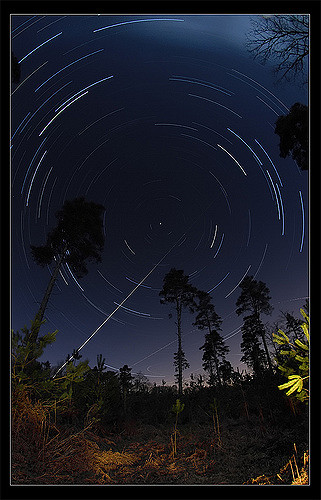Taking pictures of the stars movement with a Nikon D100?
For a science project at school I need to figure out how to take a really really really long exposure picture of the night sky. My mom told me it was possible with her old nikon D100. I know there's a setting where you can just tape down the button that you take a picture with (sorry I'm not that great with terminology) and leave it for a few hours. I just don't know where it is. I do not expect these pictures to be good… I'm probably going to get either just black or a bunch of clouds or a blur because a car went into my neighbors driveway and blinded the photo. I still have more than a month to figure this out though: D
Do what you would do to normally change the shutter speed, but set it into Bulb mode. That will set it so that as long as the button is being pushed down, it will keep the shutter open.
Compose your shot, set the camera to bulb, open the aperture wide (low f-number), put a rubber band around the shutter release, click it and start a timer.

Star trails are usually done by taking hundreds of long exposures (30 seconds or so) rather than one very long exposure. Then stitched together with software (free software available). This may be a little more in depth than you are after, but there's an excelent guide on how to do it here:

The D100 has a screw thread in the shutter release button that accepts a good old-fashioned cable release with a screw lock which can be bought for less than $ 10 (see link below). This prevents camera movement since you're not touching the camera body itself, and allows you to open the shutter for as long as you need using the B (Bulb) setting. Use a tripod to prevent camera shake.
Btw, since the D100's sensor isn't as heavily filtered against infrared light, it's more suitable for astrophotography than most newer DSLRs. If you can identify Polaris, or the North Star, I'd suggest you put that in the centre of your viewfinder to start with, and experiment (a lot) with exposure times.
Don't bother with high ISO-settings, it will only make your pics noisier and less detailed, the D100 lowest iso-setting (200 iso) is more than sufficient. Have fun.
